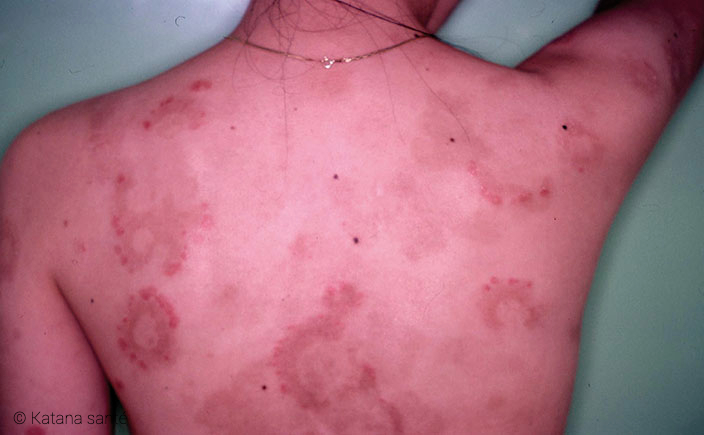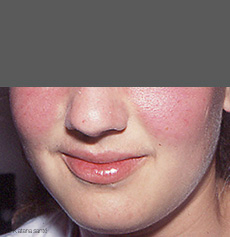There are 3 types of skin involvement specific to lupus, aggravated by sun exposure:
Acute cutaneous lupus, which is a red rash that appears symmetrically on the nose and cheekbones, the neckline, or limbs, and is a bit like a butterfly shape, hence the logo of many lupus groups, or like a carnival mask, looking like wolves eyes, hence the name lupus. Acute cutaneous lupus disappears without sequelae. On black skin, hyperpigmented (darker) scars can sometimes remain.
Subacute cutaneous lupus, which is an annular or polycyclic plate rash. It appears easily on the limbs and trunk. It most often disappears without leaving a trace, but can sometimes give pigment scars.
Chronic cutaneous lupus (the most common form of which is discoid lupus). These are well defined red patches with thick scales, which are located on the face, ears and scalp. The center of the rash is whitish and corresponds to scar tissues.
This whitish centre is permanent. On the scalp, it leads to hair loss (alopecia) in plaques that is often permanent.

 |
 |
There are 3 specific forms of cutaneous lupus: acute, subacute and chronic. Acute and subacute skin forms disappear without leaving traces. Scar atrophy of chronic lupus (discoid) is permanent. The sun often worsens lupus skin damage.